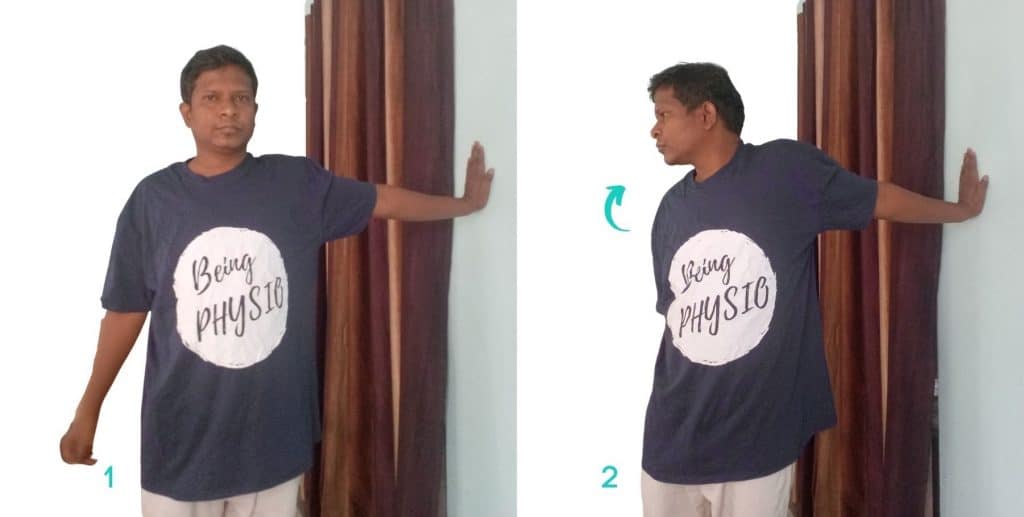Last updated on June 19th, 2025 at 12:57 pm

If you are experiencing pain in your shoulder blade area with an audible or palpable clicking of the scapula with arm movement. In that case, chances are you are suffering from snapping scapula syndrome.
It is typically seen in young and active individuals who are involved in repeated overhead and throwing shoulder movements or during sports like weight lifting, swimming, baseball and stocking shelves.
This condition is also known as scapulothoracic bursitis. It occurs when the shoulder blade bone rubs against the muscles or tissues in the shoulder, causing a grinding, snapping or popping sound.
Fortunately, you can do exercises to alleviate the symptoms of snapping scapula syndrome.
What is snapping scapula syndrome?
Snapping scapula syndrome, also known as scapulothoracic bursitis, is a condition where the scapula, or shoulder blade, does not glide smoothly over the thoracic cage, causing pain and sometimes a clicking sound when the shoulder is moved.
This can occur due to anatomical pathology and is often seen in athletes who overuse their shoulder girdles, especially during overhead activities1.
The common associated pathology includes:
- Scapulothoracic bursitis
- Dysfunction of shoulder girdle muscles due to injury.
- Scapulothoracic masses such as scapular chondrosarcoma.
6 Evidence-Based Exercises for Snapping Scapula Relief
Scapular stabilization exercises are important for the conventional management of snapping scapula. It is crucial to optimize scapular alignment and control during upper limb movement2.
Rehabilitation should also include postural dysfunction3. One of the common abnormal postures that lead to snapping scapula syndrome is the hunchback posture or forward head posture.
The exercises we will learn here aim to stretch the tight muscles and strengthen the weak muscles around our shoulder girdle.
1. Cross-Arm Stretch for Immediate Scapular Tightness Relief
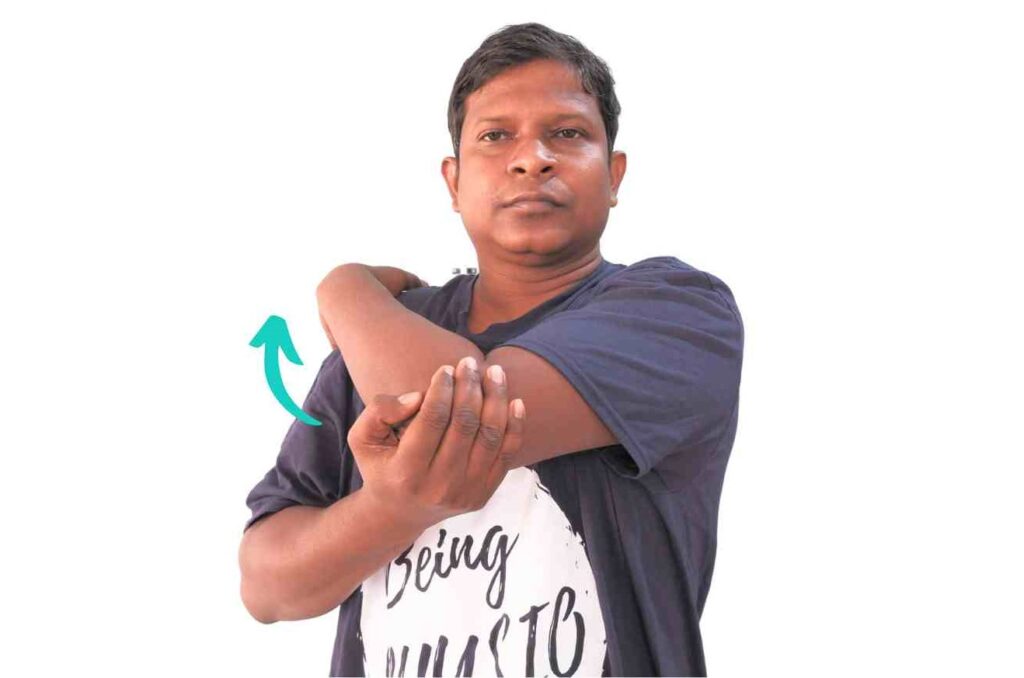
Our first exercise is the cross-arm stretch. This exercise is aimed at stretching the tight shoulder blade muscle. In a chronic snapping scapula case, the shoulder blade muscles on the upper back region often get stiff.
We need to stretch it and release this stiffness. To perform this exercise:
- Stand up straight with your feet shoulder-width apart.
- Next, raise your left arm straight up and bend it at the elbow so your hand hangs behind your neck.
- Then, reach your right arm behind your back, resting your hand on your left shoulder blade.
- Slowly move your right hand up your spine until you feel a stretch in your shoulders and upper back.
- Hold this position for 15-30 seconds and then repeat on the other side.
2. Wall Angels to Correct Scapular Winging
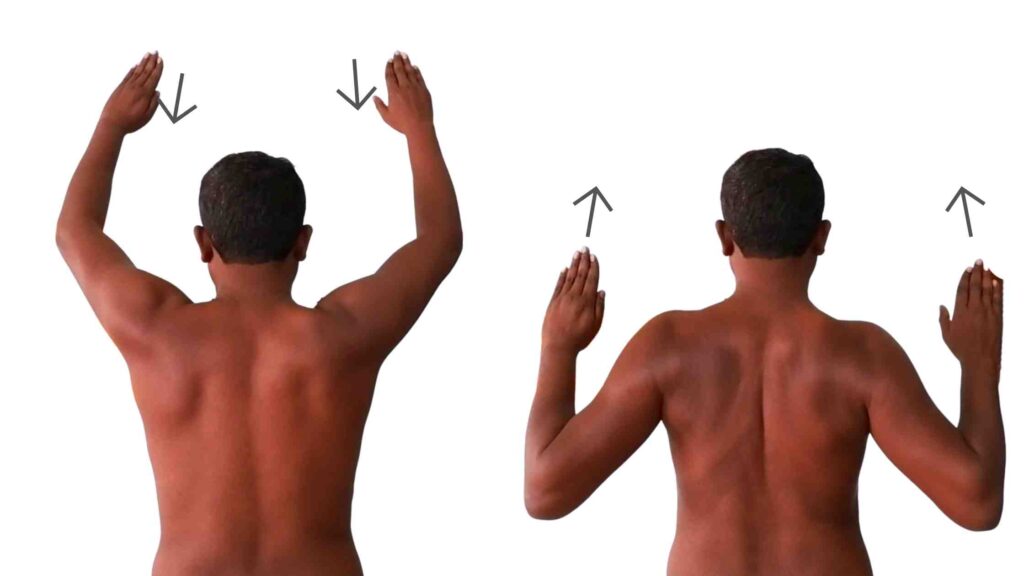
The second exercise for snapping the scapula is the wall angles, also called scapular retraction. This exercise aims to strengthen the shoulder blade muscles. We will learn the exercise by resting our backs against the wall.
However, you can also perform this exercise without inclining on the wall. Whatever suits you, here is the exact procedure of the wall angels for snapping scapula exercise.
- Stand with your back against a wall to perform this exercise, ensuring your feet are about six inches away. Keep your feet shoulder-width apart and your toes pointing forward.
- Next, slowly raise your arms to the sides, ensuring your elbows are bent at a 90-degree angle. Your arms should parallel the floor, and your palms should be facing forward. This is your starting position.
- Now, move your arms up and down like making a snow angel on the wall. Always keep your elbows and wrists in contact with the wall.
- Focus on squeezing your shoulder blades together as you move your arms up and down. This will help to engage your upper back muscles and improve your posture. You can also add exercises specific to improving posture for better results..
- Repeat this exercise for 10 to 15 reps, maintaining proper form throughout.
Chronic poor posture worsens scapular snapping. So, we recommend wearing the posture corrector during desk work to train proper shoulder blade positioning.
- ADJUSTABLE DESIGN: Features fully adjustable shoulder straps and waist belt to provide a customized fit for different bo…
- POSTURE SUPPORT: Helps align your spine and shoulders by gently pulling back the shoulders to promote proper posture whi…
- COMFORTABLE FIT: Constructed with breathable, lightweight material that can be comfortably worn under or over clothing t…

3. Serratus Anterior Activation with Wall Push-Ups
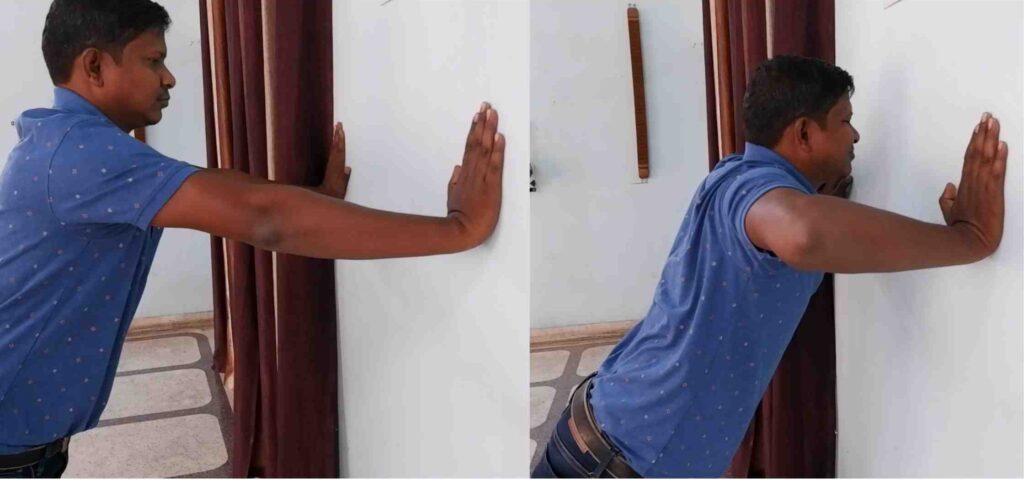
Wall push-up plus exercise is useful for people suffering from snapping scapula syndrome. This exercise primarily targets the serratus anterior muscle, which protracts the scapula. This exercise is really simple to do. All you need to do is:
- Stand a few feet away from a wall, place your palms on the wall at shoulder height, and then push your body towards the wall while keeping your elbows straight.
- Once you reach the wall, you should continue pushing your body forward by shrugging your shoulders and protracting your scapula.
- Hold this position for a few seconds, then relax and return to the starting position.
There are a few things to keep in mind while doing this exercise:
- First, start with a shorter range of motion and gradually increase it as you get more comfortable with the exercise.
- Second, make sure to keep your elbows straight throughout the exercise.
- Third, focus on the protraction of the scapula and avoid any movements that cause pain or discomfort.
5. Scapular push-up exercise
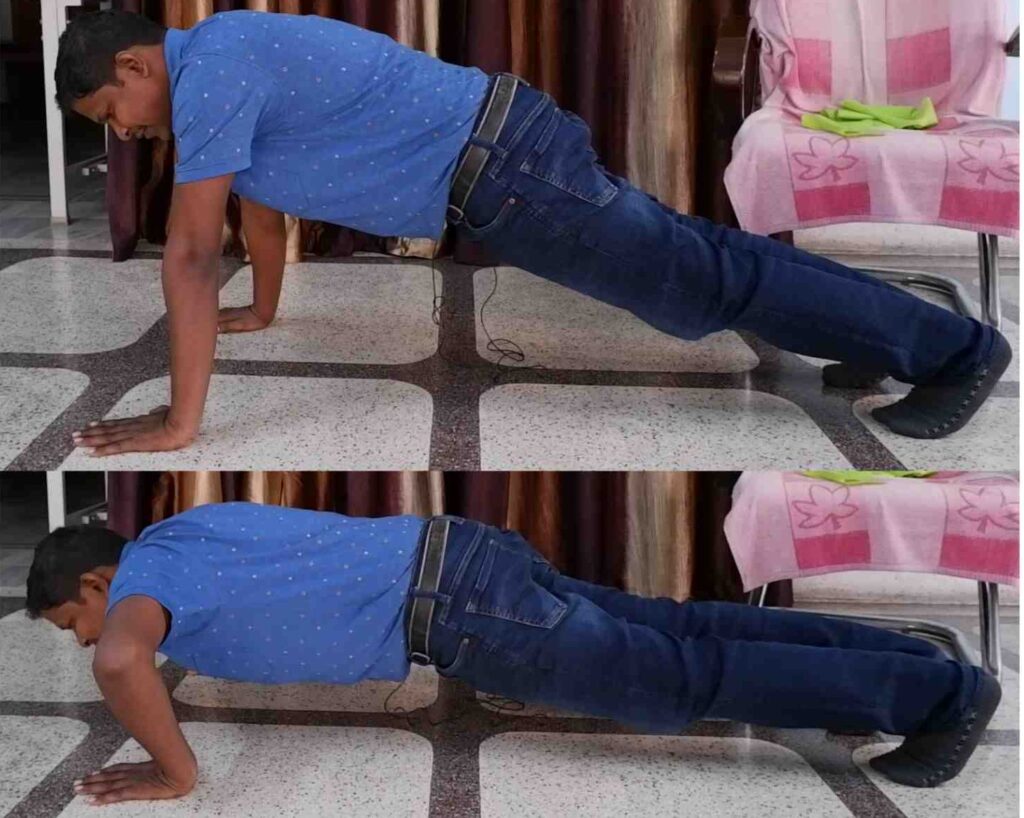
Scapular push-ups can help strengthen the muscles in your upper back and shoulders, which can help reduce the friction between the shoulder blade and surrounding tissues. It is a simple exercise that can be performed anywhere without any equipment.
- To perform the scapular push-up exercise, start in a plank position with your hands directly under your shoulders and your feet shoulder-width apart. Keep your body in a straight line from head to toe throughout the exercise.
- Next, lower your body towards the ground by bending your elbows, keeping them close to your sides. As you lower your body, focus on squeezing your shoulder blades together and down towards your spine.
- Hold this position for a few seconds, then push back up to the starting position, making sure to keep your body straight.
- Repeat this movement for 10 to 15 reps.
6. The shoulder blade squeezes
Shoulder blade squeezes can help strengthen the muscles in your upper back and shoulders, which can help reduce the friction between the shoulder blade and surrounding tissues.
- You can sit or stand with your arms at your sides to perform this exercise. Begin by taking a deep breath and then exhaling slowly. As you exhale, squeeze your shoulder blades together as if trying to hold a pencil between them.
- Hold this position for five seconds, then return your shoulder blades to their starting position.
- Repeat this movement for 10 to 15 repetitions or as many as you feel comfortable doing.
- You should feel a gentle stretch in your shoulder blades as you squeeze them together, but you should not feel any pain or discomfort.
This exercise can help improve your posture, relieve tension in your neck and shoulders, and reduce the risk of developing shoulder pain or injury.
It is a great exercise to incorporate into your daily routine, especially if you sit at a desk for long periods or engage in activities that require repetitive arm movements.
When to Seek Medical Help for Snapping Scapula
How Physical Therapy Fixes Chronic Snapping Scapula
These exercises are important for rehabilitation, but you must visit a physiotherapist who can apply various other modalities, such as ultrasonic therapy, shortwave diathermy, and interferential therapy, to improve your pain.
You can use heat therapy at home and apply pain balm to the affected area.
One effective method is to apply the pain balm around the painful area and let it absorb into the body for 10 minutes. After 10 minutes, apply heat therapy over the area.
There are different ways to apply heat, such as using an infrared lamp, electric heating pads, or a hot water bottle. Another option is to dip a towel in warm water, squeeze it, and apply it.
Signs You Need a Cortisone Injection or Surgery
Finally, local injection of non-steroidal anti-inflammatory medication may be considered when nothing works. In extreme cases, surgical management3 is the treatment of choice.
Have you tried these exercises? Share your experience in the comments!
Keep Reading: 5 Easy Theraband Exercises for Shoulders to ease impingement and Tense, Frozen shoulder
FAQs About Snapping Scapula Syndrome
The author is a physiotherapist who has been practising for the last 17 years. He holds a Bachelor's in Physiotherapy (BPT) from SVNIRTAR (Swami Vivekananda National Institute of Rehabilitation and Research), one of the prestigious physiotherapy schools in India.
Whatever he learns dealing with his patient, he shares it with the world through blogs and e-books. He also owns a YouTube channel, "Sunit Physiotherapist" with over 8 lakh active subscribers. Here, he shares everything he gets to learn serving the patient.







